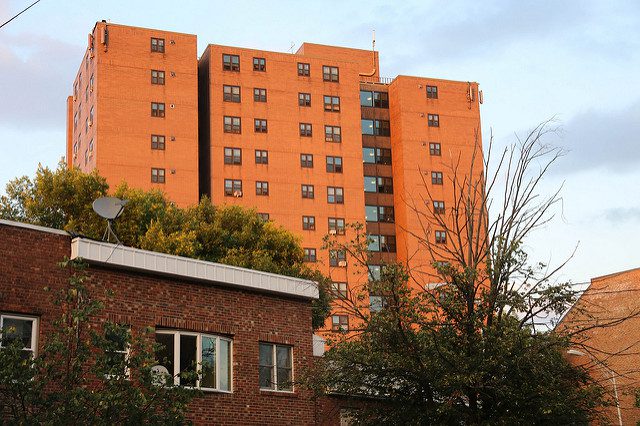From the National Community Reinvestment Coalition
Second CRA Rule Released for Comment
Fair lending groups across the country are reacting to a proposed Community Reinvestment Act (CRA) regulation recently released for comment by the four federal banking regulators. Reform of the CRA, a 1977 law requiring banks to meet the credit needs of low-income and minority communities, has been pushed aggressively by community groups, frustrated by the lackluster approach to enforcement by regulators and the dearth of lending in low-income and minority communities.
However, the new regulation, the second attempt in a year by banking regulators to revamp the rule, is viewed by many as substantially weaker than a version released last December. Two issues are dominating debate over the rule.
Under the first proposal drafted by the agencies, a bank’s lending record would have been primarily evaluated by comparing its market share in upper-income areas to its share of loans in low- and moderate-income neighborhoods. Lenders would have been expected to have at least an equivalent share to get a passing CRA rating. Strongly supported by community and consumer groups, the test was dropped from the regulation after the banking industry – encouraged by the Federal Reserve – mounted a full-scale lobbying effort to remove it.
Ironically, while banks have continually called for clearer and more objective CRA lending standards, when presented with a performance-based test, the industry balked. Not surprisingly, a number of local studies by community groups indicated that a substantial number of institutions would have failed the test, suggesting that bank opposition to the test was based more on the potential poor showing by lenders, rather then any inherent defect of the test. Many advocates are pushing for the reinstatement of the market-share test in the final regulation.
The second major issue centers on the disclosure of small business lending data. Fair lending groups have long pushed for more small business lending data to determine if low-income and minority neighborhoods, and minority- and women-owned enterprises, are receiving their fair share of small business lending. The original proposal would have provided new data on banks’ lending to specific neighborhoods (requiring data on lending by census tract), but no information on lending by race and sex. Under the new regulation, the bank agencies will require banks to disclose small business lending by race and sex (however, not by specific racial and ethnic categories), but at the expense of the detailed geographic data. To the outrage of community groups, the regulators will continue to collect the geographic data but will no longer make it publicly available. Since this inforamtion is essential to determine if specific neighborhoods are being redlined, advocates are demanding that the agencies make the data fully public.
Collecting race and sex data has also sparked outrage, not from fair lending advocates, but from the banking industry and the Federal Reserve. Complaining that the data will lead to “quotas”, bankers are strongly resisting the new disclosure requirements (although some banks already voluntarily report this information). Leading the charge on this issue has been Federal Reserve Governor Lawrence Lindsey, a Republican appointee to the Fed. Lindsey, who has consistently worked to derail CRA reform, has likened the new data requirements to Nazi Germany’s Nuremberg laws, arguing that the data could create racial divisiveness and “march us down the road to Lebanon or Bosnia.” More concerned that racism and discrimination, rather than data on lending, is contributing to the polarization of America, fair lending advocates are in full support of the expanded data.
There are a number of other issues in the new regulation, and it is critical that the affordable housing community comment on the rule. Comments are due by November 21, but the regulators may accept comments after that date. For a copy of the regulation and a sample comment letter, contact the National Community Reinvestment Coalition at 202-986-7898.
From the National Coalition for the Homeless
New Policies Focus on Ridding Central City of Homeless People
There is no doubt that the quality of life of urban America continues to deteriorate, and everyone seems to be looking for a scapegoat. Many residents and political leaders seem to have chosen to place the blame for their woes directly at the feet of poor and homeless people. Absent the political will and resources to adequately address the root causes of urban poverty, they have turned to their police forces to make the poor look like they have gone away.
In some cities, these efforts are simple, yet painful, adjustments in local statutes, making it illegal to panhandle, sit on the sidewalk, or sleep on park benches. In other cities, the efforts to move homeless people out of the central business district are much more sophisticated. Some have taken on militaristic names, like San Francisco’s “Matrix Plan,” which has led to the issuing of more than 11,000 misdemeanor and infraction citations to poor and homeless people since its implementation in August, 1993.
Other communities are creating outdoor camps or new large shelters to rid the central city of homeless people. These large facilities, which fly in the face of everything that has been learned over the last decade regarding the practical scale of shelters, are being touted as the “alternative” to life on the streets. In some communities people are essentially being told by police to move to these facilities, move out of town, or be arrested.
No one, not even the most radical homeless advocate, is fighting for the right of people to live on the streets. No one benefits from public spaces that have become campgrounds and open air latrines for desperate people. But laws which push poor people out of sight, often into struggling neighborhoods, or force them into shelters with 499 roommates as an “alternative” to life on the street are not an adequate response to people living in public places and in the end will only exacerbate the problem.
Advocates in many communities are responding to these new threats to the civil rights of homeless people with litigation, by creating “street watch” programs which monitor police actions toward homeless people, or by actively opposing efforts to build large scale shelter facilities or campgrounds. For more information on how you can respond to anti-homeless efforts in your communities, contact the National Coalition for the Homeless at 202-775-1322.
From The National Low Income Housing Coalition
Just Don’t Call It Pork
Last month, the VA-HUD-IA Appropriations Bill Conference Report was passed by the House and Senate and signed by the President.
The only controversy during the floor debate and vote in the House occurred when the House gave close scrutiny to the funding of $290 million in HUD special purpose grants. These grants provide funding for projects that are both unauthorized and site specific. Labeling this $290 million spending “pork barrel politics,” a majority of Republicans joined with 59 Democrats and voted to oppose a motion to accept the grants. However, the motion narrowly passed by several votes 189-180.
This spending was called into question because, although the House had passed an appropriations bill with zero spending for special purpose grants and the Senate had earmarked $135 million, the House/Senate conferees came back with a “compromise” figure more than double the Senate figure – $290 million. In FY 1994, the VA-HUD-IA Subcommittee appropriated no money for special purpose grants.
[Looks like the economy is improving. – Ed]





Comments